Olympus’ latest Stylus Tough digicams reckon they’re the world’s fiercest. The new Olympus Stylus Tough-8010 and Stylus Tough-6020 each pack 14-megpixel sensors, 5x wide-angle optical zooms and 2.7-inch sunlight-visible LCD displays, but the real headline grabbing features are the shockproofing, waterproofing, crushproofing and freezeproofing……
Last summer I took the Olympus TOUGH 8000 with me on a whitewater rafting trip with my girlfriend’s family. Though I wasn’t impressed with the image quality it produced, there was no arguing with its utility in such a demanding environment. I was able to tie the camera to my life vest and snap away as I was repeatedly doused with ice-cold water, swam down rapids, and banged against rocks. Now, a little ways down the road, Olympus have revamped their top-of-the-line all-weather camera and given it a new number: TOUGH 8010.
Olympus Stylus Tough cameras already are world-renowned for being shockproof, waterproof, crushproof and freezeproof powerhouses. Now, the images they capture are virtually “delete-proof” because the new STYLUS TOUGH-8010 and STYLUS TOUGH-6020 deliver amazing images thanks to new technologies, including 14 megapixels, High-Definition (HD) video and powerful 5x wide-angle optical zoom lenses. These cameras not only endure more than any other cameras, they also capture images as vivid as the adventures you live.
As you’d expect for a “TOUGH” camera, the 8010 is every inch the heavyweight contender. The body is made of solid metal, and while the camera is actually substantially lighter than its predecessor (4.3oz vs 6.4oz), it’s still pretty heavy for a compact. The finish is all chrome, with exposed rivets and screws to really drive home the fact that this thing means business.
Olympus claims the TOUGH 8010 can withstand drops of up to 6.6 feet, submersion of up to 33 feet, and temperatures as low as -10C (or 14F). Every opening on the body is sealed with a gasket or some other form of seal, including the aforementioned battery and memory card door, which has both a toggling latch and a rotating secondary latch for your extra special peace of mind. The lens cover is yet another piece of chromed metal, which slides purposefully out of the way when the camera is turned on.
The operating system on the TOUGH 8010 both looks and sounds like a Nintendo GameBoy UI, right down to the graphics and bleep-bloop sound effects. Using the camera’s menus is a bit like taking a trip back to the early 90s, both in terms of the aesthetic experience and in terms of the menus’ responsiveness, which is pretty abysmal.
Start up time is slow by industry standards, with an Olympus splash screen hanging on for a few seconds before giving way to the LCD viewfinder. Along the right side of the screen, a series of icons give an indication of the menu settings you can change. The camera defaults to Program mode, which is essentially as close as it gets to manual shooting. Here you can change the flash settings, toggle the macro mode, set the self-timer, adjust the exposure compensation, change the white balance, set the ISO, and select continuous shooting. There is no way to manually set the aperture or shutter speed. From this on-screen menu, you can also select a different shooting mode. These include Intelligent Auto (iAuto), Beauty, Panorama, Magic Filter, and Scene, which automatically detects the kind of scene you’re shooting and adjusts the various settings accordingly.
Shooting is a pretty straightforward affair. You aim, you set your zoom level, you shoot. Shutter lag is a bit high, but not completely out of line for a compact. Images take their time in coming up for review after you shoot, and you cannot zoom in on an image during the five-second review period. You have to wait for this period to pass, for the screen to go back to live view, and then hit the playback button. It seems like a small thing to complain about, but in practice, for someone who’s accustomed to checking sharpness and fine contrast, etc, on the fly — it’s a real drag.
Both new Stylus Tough cameras shoot gorgeous 720p HD videos using a one-touch button, so you’ll always capture the scene. Playback also is a breeze. Gone are the days of friends and family huddling around a camera’s LCD to see the pictures you just snapped. Now, you’ll be the hit of the party or any family function when you proudly display your brilliant images and videos on any high-definition television (HDTV). Simply connect the camera to an HDTV with an HDMI™ cable, which can be purchased separately at any consumer electronics store. With HDMI Control, you can use your HDTV’s remote to control playback functions and navigate the camera’s menus from the comfort of your favorite couch.
Video recording is a pretty idiot-proof experience. There’s a dedicated record button (the one with the big red dot) on the rear. Pressing it takes you out of whatever mode you’re currently in and sets the camera to recording moving pictures. The camera takes a few seconds to make this transition, which could be a problem if you’re trying to react quickly to catch something ephemeral, but once it does it begins recording immediately. When you’re done recording, simply hit the same button to end the video and the camera will return to stills-shooting mode after a brief pause.
Unfortunately, April is a bit too cold for rafting here in northern New Mexico, and I don’t have a pool, but I did go for a hike near the Santa Fe River and managed to take some underwater-looking-up shots. I dropped the camera into the water, dropped it on the carpet in my office from eye-level (about six feet), showed it Freddy Got Fingered, and generally treated it like it was a very bad boy. In short, it fully lived up to its billing as shockproof, waterproof, and cold-proof. It’s one tough customer.
Based on my experience with the TOUGH 8000, I knew the 8010 wouldn’t wow me. I was hoping that with the new sensor and lens combination there might be the outside chance of a surprise, but in the end the results from the new camera were virtually indistinguishable from those of its predecessor, if not a little worse.Sharpness is okay on close-focus objects and gets progressively worse on distant subjects. Color rendition is fairly neutral, and the camera doesn’t seem to over-do the contrast, which is nice to see from a consumer point and shoot. Image noise is apparent even at base ISO, though it’s manageable until about ISO 800 and up. JPEG compression is pretty nasty even at the “Fine” compression setting, and of course there is no option to shoot RAW. Shooting into the light produces severe ghosting and chromatic aberration, which is hard to eliminate in editing.
Whether you’ve got a surfer or skier in your sites, AF Tracking technology locks your subject in focus. It continuously adjusts focus and brightness whether you or your subject is moving, and is perfect for unpredictable situations such as photographing young children. Additionally, the new “Pet Mode” was specifically designed for animal lovers.
In-camera creative features debuted on Olympus E-System cameras last year. Similar technology, called Magic Filter, has been developed for the new Stylus Tough cameras. The Magic Filter enables the user to enhance and customize images as they’re being captured. This translates into more fun and flexibility as customization is no longer limited to using expensive and time-consuming computer software.
The Olympus Stylus TOUGH 8010 is slated to be waterproof down to 33 feet, shockproof up to 6.6 feet, crush proof up to 220 pounds, and freezeproof down to 14 degrees Fahrenheit. The camera proved itself when it came to taking a swim, but if you swim near sand, there is a high possibility that little sand granules will fall inside the lens enclosure mechanism and prevent the camera from working properly. That happened to us.
The TOUGH 8010 failed in the shockproof department. In fact, we dropped the Olympus Stylus TOUGH 8010 from approximately three feet in a parking lot and the lens shattered. So now we had a “rugged” camera with a smashed lens that couldn’t even open. But it gets even better. Our 160-pound digital imaging editor tested the crushproof claim by standing on the Olympus Stylus 8010 and applying a few short bursts of pressure. Crack! There goes the LCD screen. At this point, there was no push to test the freezeproof claim. In fact, we spoke with a sea captain who had to return his Olympus Stylus TOUGH 8000—the predecessor to the TOUGH 8010—because it froze in Antarctica.
The TOUGH 8010 produces shots on par with the cheaper end of compact digital cameras — cameras you’ll find in the $120 range at Target or Wal-Mart. Some cell phone cameras are approaching this quality level, which makes the very existence of this category of point and shoot sort of tenuous.
The new Magic Filter includes:
• Pop Art – Enhance and saturate colors to create vivid, high-impact pictures that express the joyful, lighthearted feeling of the Pop Art style of the 1960s;
• Pin Hole – Reduce the peripheral brightness of an image as though it were shot through a pin hole, connecting the viewer intimately with the subject at the center;
• Fish-Eye – Emulate the wide angle of a fish-eye lens by taking extremely wide, hemispherical images and magnifying the center of the frame; and
• Drawing – Turn your image into a sketch outline for children to color.
The STYLUS TOUGH-8010 can withstand a 6.6-foot drop and the STYLUS TOUGH-6020 can survive a 5-foot drop thanks to the Stylus Tough series’ shock-absorbing technology, which minimizes the impact on the lens and circuitry. The STYLUS TOUGH-8010 can also withstand 220 pounds of crushing pressure. Throw it into your bag and go; don’t worry about it being handled badly during the trip.
Stylus Tough cameras perform as well under water as they do on land because their lightweight, stainless steel and aluminum exteriors are matched with interior rubber gaskets and O-rings to seal out the elements. The STYLUS TOUGH-8010 can dive to 33 feet under water, while the STYLUS TOUGH-6020 can be submerged to 16 feet under water. The inclusion of four preset underwater scene modes make these cameras perfect for taking photos while scuba diving, snorkeling or simply having worry-free fun in the pool. They can also capture HD movies with audio even under water – perfect for schools of fish or kids jumping into the water. The cameras feature a water-repellent lens coating to prevent water droplets from forming on the lens, enabling you to get crystal-clear shots no matter how wet the shooting environment.
Whether you’re cruising the Alaskan ice highway in a snowmobile or building a snowman in your backyard, both new Stylus Tough cameras can still perform when the temperature dips well below freezing (14 degrees Fahrenheit; -10 degrees Celsius) and offer a 14-megapixel image sensor to enable consumers to achieve consistently sharp and vivid images when producing large-format prints or cropping/enlarging a portion of an image. Stylus Tough cameras continue to enable you to capture great high-resolution images in freezing situations where most traditional cameras would fail.
Dual Image Stabilization combines two technologies – mechanical Sensor-Shift Image Stabilization and Digital Image Stabilization – to provide one powerful anti-blur solution for capturing great images whether the photographer or the subject is moving. Olympus’ mechanical Sensor-Shift Image Stabilization keeps images sharp by adjusting the internal image sensor to compensate for camera movement, even in low-light conditions when shutter speeds are slower. Additionally, Digital Image Stabilization captures the action with high ISO sensitivity and fast shutter speeds that prevent blurry images often caused by a moving subject.
Portrait and group shots make family reunions live beyond the short event, and with Face Detection you’ll capture even the shyest relatives. The STYLUS TOUGH-8010 and STYLUS TOUGH-6020 both detect up to 12 faces within the frame and automatically focus and optimize exposure to capture sharp, brilliant portraits and group shots. Thanks to the unrivaled durability of the Stylus Tough series cameras, you’ll capture amazing photos even if your next family reunion is at a national park, a water park or a ski slope!
You take your Stylus Tough camera to places where you want to capture as much of the scene as you can. In-Camera Panorama mode makes it easy by capturing three images and stitching them together to create one amazing panoramic picture. Simply press the shutter button and slowly pan across a panoramic scene. The second and third images will be captured automatically and stitched together with the first image – resulting in one seamless panorama-size picture. To create the ultimate panoramic picture, consumers can use the OLYMPUS [ib] software to stitch up to 10 images together. Great panaroma proof that you conquered the mountain summit.
HyperCrystal III displays twice as bright as previous LCDs so that you can see the details more clearly, even in direct sunlight. The technology is offered in a 2.7-inch LCD on both the STYLUS TOUGH-8010 and STYLUS TOUGH-6020.
An LED Illuminator on the Stylus Tough cameras works like a mini-flashlight on the front of the camera to enhance focus and exposure for macro shooting – great for underwater close-ups where light is scarce. The LED illuminator also works in conjunction with Bright Capture to help illuminate your subject when taking low-light portraits.
Olympus developed its exclusive TruePic III image processor for the demanding performance of digital SLR (single lens reflex) cameras. Olympus’ enhanced TruePic III Image Processor produces crystal-clear photos using all the pixel information for each image to deliver superior picture quality with more accurate colors, true-to-life flesh tones and faster processing speeds. TruePic III also captures crisp, clear images at high ISO settings, which are traditionally associated with increasing image noise or producing grainy photos.
The TOUGH 8010, however, costs about three times as much as those low-end cameras, which means that if you end up buying it you should do so for its build quality and go-anywhere nature rather than its image quality. You wouldn’t want to dunk your iPhone in a river, but this thing will take it in stride.
Build quality is superb. That’s all you can ask for from a camera that claims to be as tough as this one. Performance and image quality are a letdown, but in its price range, the TOUGH 8010 is a good performer. The only real competition comes from the Pentax Optio W90 and the Canon PowerShot D10. On the whole, these cameras suffer from the same issues to varying degrees. The only way to get substantially better go-anywhere image quality would be to buy a dSLR and a purpose-built waterproof shell for it, but the price here quickly skyrockets.
Specifications:
- 14 megapixels
- 5x optical zoom
- Dual image stabilization
- 2.7-inch LCD monitor
- 720p HD video (MP4 format)
- Waterproof (33 ft), shockproof (6.6 ft), crushproof (220 lbs. of pressure), freezeproof (-14 F)
- 2GB built-in memory
- Captures to SD/SDHC memory cards
- Rechargeable lithium-ion battery
If you need waterproof, shockproof, and cold-proof in the sub-$400 range, this is it.
Resources :digitalcamera-hq.com,thegadgetguycolumn.com,infosyncworld.com

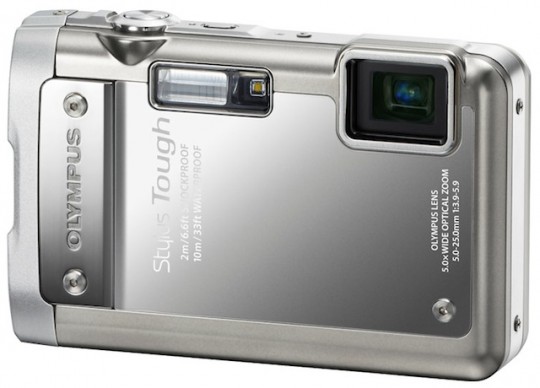
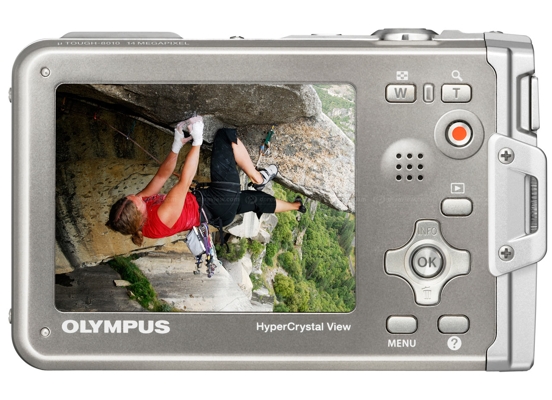
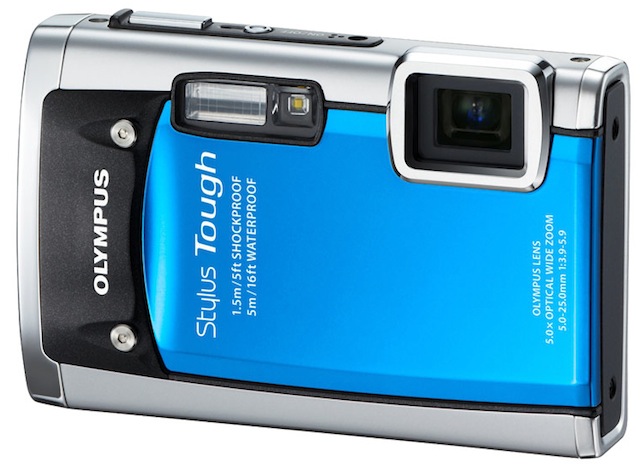
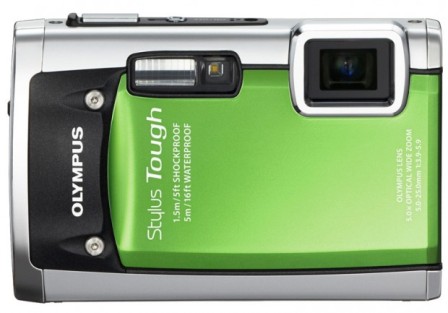
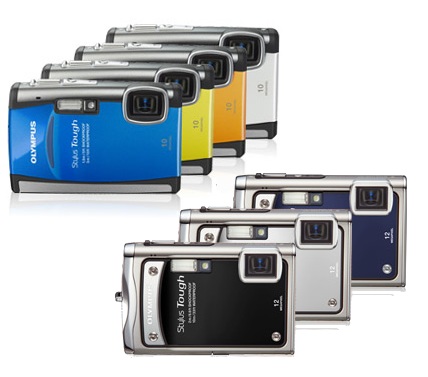


i’m having a problem with my utough 8010. Whenever i turned it on it always display on a USB mode and their is no way for capturing. what am i suppose to do? pls help. thanks.
how to charge the camera
ok, good promotion.
But olympus tough isn’t as tough as the promotion sounds.
With my first one, there was a problem with water, so the camera stopped working.
Bought in the states, gave it to olympus switzerland … as an exception (states have 2 yrs, europe 1 yr warranty) I got a new camera, but only 1/2 year warranty.
Even not a year and the camera started bothering me with the settings … bad thing so. Instead of taking a quick shot I had to manipulate the settings first … and always this bloody tap mode on/off. I had the camera almost always in my hand and this camera could not handle it properly and always put tap mode on.
The best was coming during my last vacation. The on/off button was getting more and more in a state of not working until one day I couldn’t use it anymore. I can push like crazy … this camera is gone.
And I don’t used it like the guy with the white water rafting … just for snorkelling (1 to 2m deep), taking it with me on a marathon and once it felt down from 1m … that was as the strap let go.
So I would not recommend to buy olympus. There are other, even better brands, providing underwater cameras, like pentax, canon and some others.